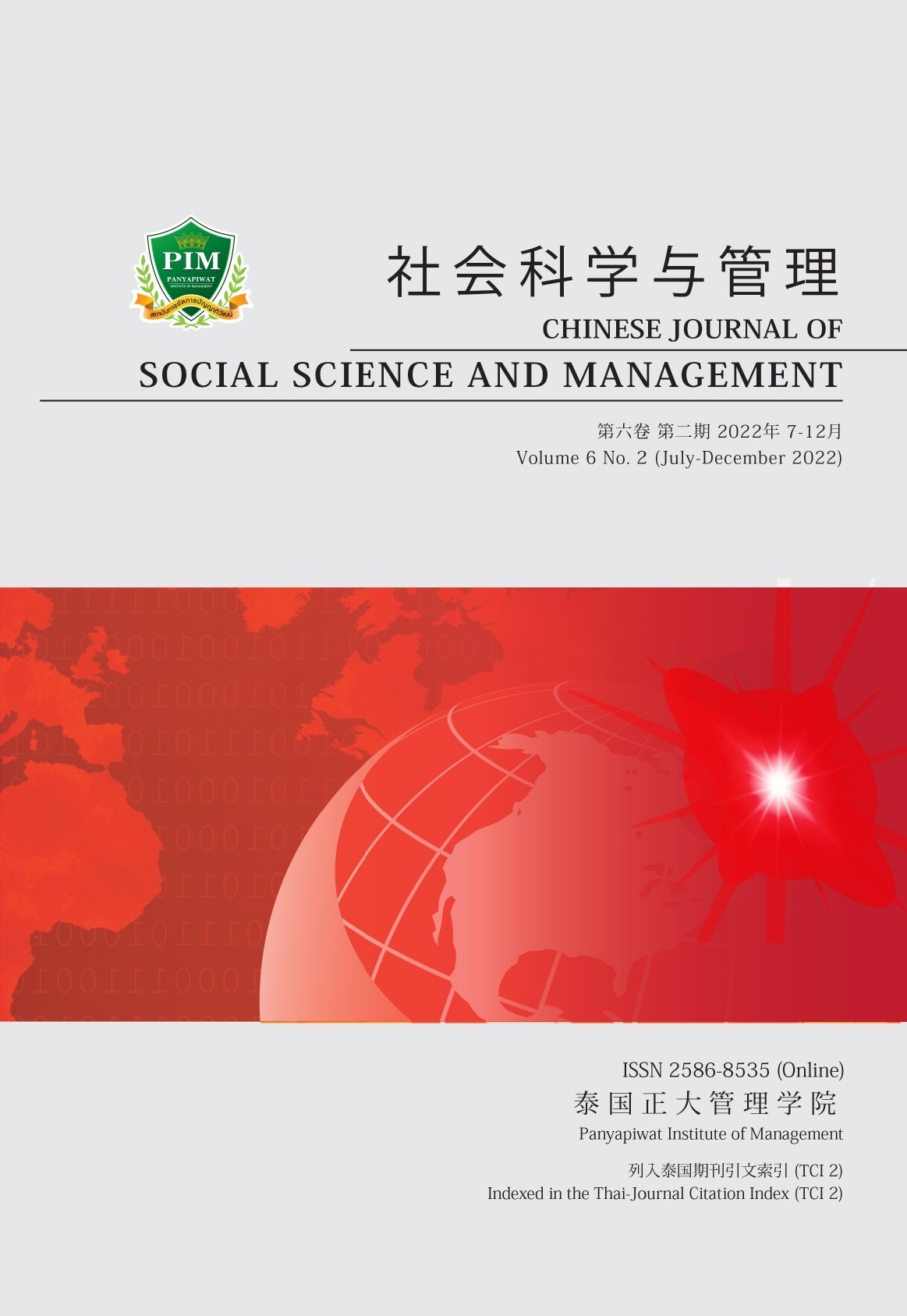THE COMPARISON OF CHINESE AND THAI SERIAL VERB SENTENCES CLASSIFICATION AND THE ANALYSIS OF TRANSLATION TO THAI
Main Article Content
Abstract
A serial verb sentence is a widely used sentence pattern in Chinese language. However, the
processing method of conjunctive structure in Thai language is different from that of Chinese. Therefore, the author studied the connection and difference between Chinese and Thai serial verb sentence patterns, and summarized the steps of Chinese to Thai translation of serial verb sentences. The article first
classifies and compares Chinese serial verb sentences and Thai serial verb sentences. Then, it concludes a reasonable plan for translating Chinese to Thai, so that the translation could meet the daily expression of the Thai people. From the outcome, it is hoped to provide learning ideas and suggestions for future
Thai Chinese learners in the learning of serial verb sentences.
Article Details

This work is licensed under a Creative Commons Attribution-NonCommercial-NoDerivatives 4.0 International License.
Chinese Journal of Social Science and Management Editorial Division
The Office of Research and Development, Panyapiwat Institute of Management
85/1 Moo 2, Chaengwattana Rd., Bang Talat, Pakkred, Nonthaburi 11120, Thailand
Tel. 02 855 01048 E-mail: cjssm@pim.ac.th
References
Bandhumedha, N. (1967). The structure of the nucleus, a verb phrase constituent [Master’s thesis]. Chulalongkorn University. [in Thai]
Ding, S. S. (1961). Modern Chinese Grammar Speech. Commercial Press. [in Chinese]
Fu, Y. P. (2013). Analysis of the errors in the acquisition of Chinese conjunction sentences by Thai students at the beginning and intermediate stages [Master’s thesis]. Guangxi University for Nationalities. [in Chinese]
Gan, L. (2007). Semantic description of sentence with serial verbs of modern Chinese and English expression. Journal of Pingdingshan Institude of Technology, 16(4), 81-85. [in Chinese]
Harabutra, C. (1977). A study of two-verb concatenation in Thai sentences [Master’s thesis]. Chulalongkhon University. [in Thai]
Huang, B. R., & Liao, X. D. (1991). Modern Chinese. Higher Education Press. [in Chinese]
Lv, S. X. (1953). Grammar Collection. China Youth Publishing House. [in Chinese]
Lv, S. X. (1979). Chinese grammatical analysis. Commercial Press. [in Chinese]
Rangkupan, S. (1992). Subsidiary verbs /Khin3/ “Ascend” and /Lonl/ “Descend” in Thai [Master’s thesis]. Chulalongkorn University. [in Thai]
Sudmuk, C. (2005). The syntax and semantics of serial verb constructions in Thai [Doctoral dissertation]. The University of Texas.
Sun, X. H. (2008). The study of continuous verb sentences in modern Chinese and its acquisition [Master’s thesis]. Nanjing Normal University. [in Chinese]
Thepkanjana, K. (2010). Controversial constructions in Thai grammar: Relative clause constructions, complement clause constructions, serial verb constructions, and passive constructions. Chulalongkorn University Press. [in Thai]
Wongwattana, U. S. (2012). Verbs in series in Thai: Serial verbs or others? Journal of Language and Culture, 31(2), 35-66. [in Thai]
Yi, Z. H. (2003). Comparison of the structure of conjunction sentences between Thai and Chinese. Journal of PLA University of Foreign Languages, 1(3), 95-100. [in Chinese]
Zhao, Y. R. (1948). Mandarin primer. Harvard University Press.
Zhu, D. X. (2000). Grammar lectures. Commercial Press. [in Chinese]


